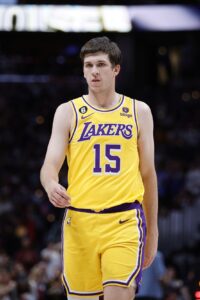The Suns‘ acquisition of Bradley Beal may leave the Mavericks as the only bidder for Kyrie Irving when free agency begins, Marc Stein writes in his latest Substack column.
Stein states that when Dallas traded for Irving in February, team officials were told that the Suns and Lakers were likely to pursue him this summer. Phoenix appears to have taken itself out of the race by trading for Beal, while L.A. is focused on keeping key elements of its current roster and doesn’t appear interested in bidding for Irving, according to Stein.
League sources tell Stein that the Mavs don’t seem to have any competition for Irving, although that could change before free agency kicks off in 11 days. The Rockets could get involved if they’re unsuccessful in luring James Harden back to Houston, but Stein was told that Irving would be their third choice behind Harden and Fred VanVleet.
Stein identifies the Heat as another team that could make a run at Irving after missing out on Beal, noting that Miami had interest in Irving before he was traded to Dallas. Stein is skeptical, however, believing the Heat are more focused on acquiring Damian Lillard from the Trail Blazers. Miami officials are hoping Lillard will opt for a change of scenery if Portland can’t trade the No. 3 pick for veteran help and that he would be motivated to join a team that just reached the NBA Finals.
Stein adds that the Lakers could still reverse course, but “Plan A” is to re-sign Austin Reaves and Rui Hachimura while trying to add Chris Paul if he’s bought out or released once he joins the Wizards. The Clippers are reportedly trying to get their hands on Paul before that can happen, either by expanding the Beal trade or making a separate deal with Washington.
Stein notes that Mavericks haven’t wavered in their plan to re-sign Irving, and team officials believe he wants to stay in Dallas. Negotiations may still be complicated, Stein adds, because the Mavs are hoping to get Irving to agree to a team-friendly contract without alienating him. Irving can receive an estimated $210MM over four years from Dallas, but he may find himself at the bargaining table with very little leverage.
 However, Buha is the latest reporter to say the Lakers
However, Buha is the latest reporter to say the Lakers